Computed tomography analysis of the cranium of Champsosaurus lindoei and implications for the choristoderan neomorphic ossification
- PMID: 31905243
- PMCID: PMC7083570
- DOI: 10.1111/joa.13134
Computed tomography analysis of the cranium of Champsosaurus lindoei and implications for the choristoderan neomorphic ossification
Abstract
Choristoderes are extinct neodiapsid reptiles that are well known for their unusual cranial anatomy, possessing an elongated snout and expanded temporal arches. Although choristodere skulls are well described externally, their internal anatomy remains unknown. An internal description was needed to shed light on peculiarities of the choristodere skull, such as paired gaps on the ventral surface of the skull that may pertain to the fenestra ovalis, and a putative neomorphic ossification in the lateral wall of the braincase. Our goals were: (i) to describe the cranial elements of Champsosaurus lindoei in three dimensions; (ii) to describe paired gaps on the ventral surface of the skull to determine if these are indeed the fenestrae ovales; (iii) to illustrate the morphology of the putative neomorphic bone; and (iv) to consider the possible developmental and functional origins of the neomorph. We examined the cranial anatomy of the choristodere Champsosaurus lindoei (CMN 8920) using high-resolution micro-computed tomography scanning. We found that the paired gaps on the ventral surface of the skull do pertain to the fenestrae ovales, an unusual arrangement that may be convergent with some plesiosaurs, some aistopods, and some urodeles. The implications of this morphology in Champsosaurus are unknown and will be the subject of future work. We found that the neomorphic bone is a distinct ossification, but is not part of the wall of the brain cavity or the auditory capsule. Variation in the developmental pathways of cranial bones in living amniotes was surveyed to determine how the neomorphic bone may have developed. We found that the chondrocranium and splanchnocranium show little to no variation across amniotes, and the neomorphic bone is therefore most likely to have developed from the dermatocranium; however, the stapes is a pre-existing cranial element that is undescribed in choristoderes and may be homologous with the neomorphic bone. If the neomorphic bone is not homologous with the stapes, the neomorph likely developed from the dermatocranium through incomplete fusion of ossification centres from a pre-existing bone, most likely the parietal. Based on the apparent morphology of the neomorph in Coeruleodraco, the neomorph was probably too small to play a significant structural role in the skull of early choristoderes and it may have arisen through non-adaptive means. In neochoristoderes, such as Champsosaurus, the neomorph was likely recruited to support the expanded temporal arches.
Keywords: choristodera; computed tomography; development; evolution; skull anatomy.
© 2020 The Authors. Journal of Anatomy published by John Wiley & Sons Ltd on behalf of Anatomical Society.
Figures
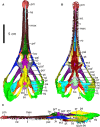



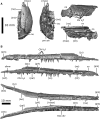

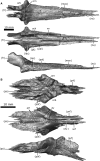

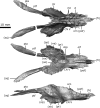

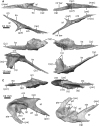


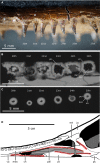

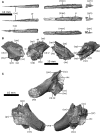
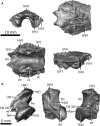
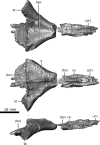




References
-
- Atkins JB, Franz‐Odendaal TA (2016) The evolutionary and morphological history of the parasphenoid bone in vertebrates. Acta Zool 97, 255–263.
-
- de Beer G (1937) The Development of the Vertebrate Skull. Toronto: Oxford University Press.
Publication types
MeSH terms
LinkOut - more resources
Full Text Sources

